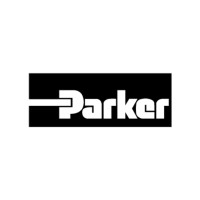
GE
A new era is here, and we want you to be a part of it. We will now be sharing our content on our respective GE Aerospace and GE Vernova pages. Be sure to follow each to keep up with the future of aviation and energy.



A new era is here, and we want you to be a part of it. We will now be sharing our content on our respective GE Aerospace and GE Vernova pages. Be sure to follow each to keep up with the future of aviation and energy.

Parker Hannifin is a Fortune 250 global leader in motion and control technologies. For more than a century the company has been enabling engineering breakthroughs that lead to a better tomorrow. Learn more at www.parker.com or on Twitter @parkerhannifin. Executive Officers: Jennifer A. Parmentier, Chairman of the Board and Chief Executive Officer Andrew D. Ross, President and Chief Operating Officer Todd Leombruno, Executive Vice President and Chief Financial Officer Mark J. Hart, Executive Vice President, Human Resources and External Affairs See our complete Global Leadership Team - https://www.parker.com/us/en/about-parker/parker-leadership.html Visit our Parker Technology Blog at http://blog.parker.com Follow us: X at http://twitter.com/parkerhannifin Facebook at http://facebook.com/parkerhannifin YouTube channel http://youtube.com/parkervideo Youtube Product and support channel: https://www.youtube.com/@ParkerProductsSupport Instagram - http://instagram.com/parkerhannifin The company's products are vital to virtually everything that moves or requires control, including the manufacture and processing of raw materials, durable goods, infrastructure development and all forms of transport. Key technology areas are aerospace, climate control, electromechanical, filtration, fluid and gas handling, hydraulics, pneumatics, process control, sealing and shielding and human motion. Traded on the New York Stock Exchange under the symbol "PH," Parker is strategically diversified, value-driven and well positioned for global growth as the industry consolidator and supplier of choice. Interested in a career at Parker Hannifin: Website at www.parker.com/careers
Security & Compliance Standards Overview












No incidents recorded for GE in 2025.
Parker Hannifin has 0.0% fewer incidents than the average of same-industry companies with at least one recorded incident.
GE cyber incidents detection timeline including parent company and subsidiaries
Parker Hannifin cyber incidents detection timeline including parent company and subsidiaries
Last 3 Security & Risk Events by Company
Angular is a development platform for building mobile and desktop web applications using TypeScript/JavaScript and other languages. Prior to versions 19.2.16, 20.3.14, and 21.0.1, there is a XSRF token leakage via protocol-relative URLs in angular HTTP clients. The vulnerability is a Credential Leak by App Logic that leads to the unauthorized disclosure of the Cross-Site Request Forgery (XSRF) token to an attacker-controlled domain. Angular's HttpClient has a built-in XSRF protection mechanism that works by checking if a request URL starts with a protocol (http:// or https://) to determine if it is cross-origin. If the URL starts with protocol-relative URL (//), it is incorrectly treated as a same-origin request, and the XSRF token is automatically added to the X-XSRF-TOKEN header. This issue has been patched in versions 19.2.16, 20.3.14, and 21.0.1. A workaround for this issue involves avoiding using protocol-relative URLs (URLs starting with //) in HttpClient requests. All backend communication URLs should be hardcoded as relative paths (starting with a single /) or fully qualified, trusted absolute URLs.
Forge (also called `node-forge`) is a native implementation of Transport Layer Security in JavaScript. An Uncontrolled Recursion vulnerability in node-forge versions 1.3.1 and below enables remote, unauthenticated attackers to craft deep ASN.1 structures that trigger unbounded recursive parsing. This leads to a Denial-of-Service (DoS) via stack exhaustion when parsing untrusted DER inputs. This issue has been patched in version 1.3.2.
Forge (also called `node-forge`) is a native implementation of Transport Layer Security in JavaScript. An Integer Overflow vulnerability in node-forge versions 1.3.1 and below enables remote, unauthenticated attackers to craft ASN.1 structures containing OIDs with oversized arcs. These arcs may be decoded as smaller, trusted OIDs due to 32-bit bitwise truncation, enabling the bypass of downstream OID-based security decisions. This issue has been patched in version 1.3.2.
Suricata is a network IDS, IPS and NSM engine developed by the OISF (Open Information Security Foundation) and the Suricata community. Prior to versions 7.0.13 and 8.0.2, working with large buffers in Lua scripts can lead to a stack overflow. Users of Lua rules and output scripts may be affected when working with large buffers. This includes a rule passing a large buffer to a Lua script. This issue has been patched in versions 7.0.13 and 8.0.2. A workaround for this issue involves disabling Lua rules and output scripts, or making sure limits, such as stream.depth.reassembly and HTTP response body limits (response-body-limit), are set to less than half the stack size.
Suricata is a network IDS, IPS and NSM engine developed by the OISF (Open Information Security Foundation) and the Suricata community. In versions from 8.0.0 to before 8.0.2, a NULL dereference can occur when the entropy keyword is used in conjunction with base64_data. This issue has been patched in version 8.0.2. A workaround involves disabling rules that use entropy in conjunction with base64_data.